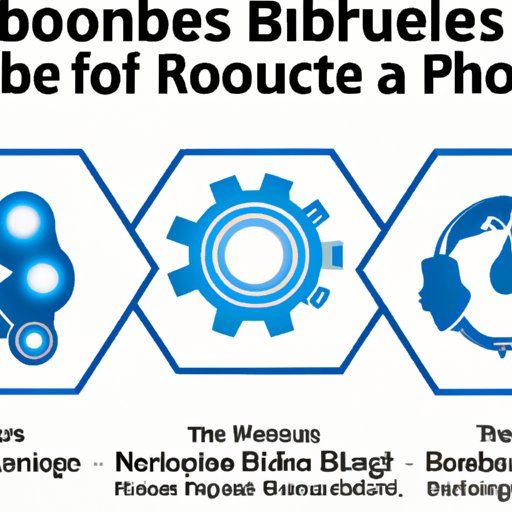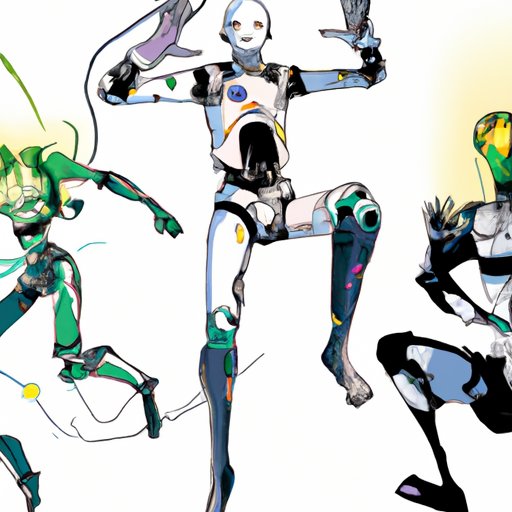Introduction
Robotics technology is rapidly advancing. From driverless cars to robotic vacuum cleaners, robots are becoming increasingly integrated into our everyday lives. But what will the landscape of robotics look like in the year 2050? In this article, we explore the potential impact of robots on our lives, work, and society over the next thirty years.

Examining the Benefits and Challenges of Robotics in 2050
The potential advantages of robotics technologies in 2050 are vast. Automation has already revolutionized many industries, such as manufacturing and logistics, and is expected to become even more sophisticated in the coming decades. According to a report by the World Economic Forum, “robots and other forms of automation could create up to 133 million new roles across all industries and countries by 2022.” By freeing humans from mundane tasks, robots can help us focus on more meaningful work, such as creative problem-solving and innovation. Additionally, robots could be deployed to hazardous environments, such as outer space or the deep sea, where human exploration is difficult or impossible.
At the same time, there are potential challenges posed by robots in 2050. As robots become more intelligent and autonomous, they may take jobs away from humans. This could lead to higher levels of unemployment and income inequality, as well as put people out of work without sufficient preparation for re-employment. Furthermore, robots could be used for malicious purposes, such as cyberattacks or surveillance, which could compromise individual privacy and security. Finally, robots could be designed to mimic human behavior, leading to ethical dilemmas about whether these robots should have rights and responsibilities.
Investigating the Human-Robot Interaction in 2050
As robots become more integrated into our lives, it is important to consider the social and cultural implications of robots in 2050. The way humans interact with robots will likely shape our culture and values. For example, if robots are seen as mere tools, then their use could be seen as acceptable, but if they are seen as equals, then their use could be seen as unethical. Additionally, robots could change the way we communicate and interact with each other. For instance, robots could serve as companions, caregivers, or even teachers, blurring the lines between humans and machines.
Furthermore, the use of robots in 2050 could raise some ethical dilemmas. For example, should robots be held to the same moral standards as humans? Who should be responsible for any harm caused by robots? Should robots have rights, such as autonomy and freedom of expression? These questions remain unanswered, but must be addressed to ensure that robots are used responsibly in the future.
Imagining a World with Robotic Technologies in 2050
Robotics technologies could have a profound effect on our lives, work, and society in 2050. Robots could be used to automate mundane tasks, freeing humans to pursue more meaningful work. Additionally, robots could be deployed in hazardous environments, enabling us to explore places where humans cannot go. However, robots could also cause disruption in the workforce, leading to higher levels of unemployment and income inequality. Finally, the use of robots could raise ethical dilemmas about how they should be treated and used in a responsible manner.
It is important to remember that, despite the potential benefits and challenges of robots in 2050, the ultimate decision lies in the hands of humans. We must carefully consider the implications of robotics technologies before deciding how to use them. Ultimately, the success of robots in 2050 will depend on how we use them responsibly to improve our lives, work, and society.
Conclusion
In conclusion, robots are expected to play an important role in our lives, work, and society in 2050. While robots could provide numerous benefits, such as automating mundane tasks and enabling us to explore dangerous environments, they could also cause disruption in the workforce and raise ethical dilemmas. Ultimately, the success of robots in 2050 will depend on how we use them responsibly to improve our lives, work, and society.
(Note: Is this article not meeting your expectations? Do you have knowledge or insights to share? Unlock new opportunities and expand your reach by joining our authors team. Click Registration to join us and share your expertise with our readers.)
